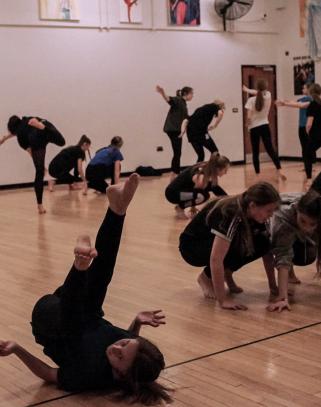We interviewed Masilo when she performed her Giselle in Brighton in 2019. As part of this conversation she spoke about the intertextual nature of her work, a movement vocabulary that draws from a field of different African dance cultures, these coming from the dancers in her company, and about the role of gender in her work and in this adaptation.
Glitch Podcast: Masilo in Brighton 2019
Choreography and Transmission
In the Romantic era it was it was the libretto of Giselle that was in copyright, not the choreographic score, and as such many different versions of the ballet toured Europe until about 1860. The originating choreography of Giselle was by Jean Coralli and Jules Perrot, the choreography of Giselle that we see today is normally attributed to Marius Petipa and Lev Ivanov. For a granular exploration of the history of the ballet and its choreography we recommend the dance historian, critic and writer Alastair Macaulay's extensive collaborative research, Giselle: Questions and Answers.
Adaptations
When it comes to adaptations, in the words of theorist Linda Hutcheon, it is a question of what is being adapted. (Linda Hutcheon, A Theory of Adaptation, pg 37). An adaptor will come to an originating work with their own artistic agenda. In the case of Giselle, the story continues to inspire both ballet and contemporary dance choreographers in the production of different versions of the ballet, but it is often the way they imagine how that story speaks to their individual cultural contexts that will distinguish their adaptation.
Cultural Contexts
Swedish choreographer Mats Eks (1986) sets his Giselle in a Freudian landscape and the tensions between rural and city dwellers, Michael Keegan Dolan (2000) focuses on abuse, homophobia and poverty in rural Ireland, Akram Khan (2018) imagines Giselle in a centre for asylum seekers. While Giselle was written in France it flows from the European Romantic tradition of literature, painting and ballet, what scholar Rainy Demerson describes as a pan-european context (Rainy Demerson, Decolonial Moves: Remembering Black Women in South African Contemporary Dance, pg 164, online)
Dada Masilo: an African perspective
The telling of Giselle that we are focussing on here is by South African choreographer Dada Masilo whose striking production invites us to re-read the ballet from a distinctly African perspective. Demerson's writing which we can only briefly refer to here considers at depth the significance of Masilo in relation to as she says 'the racial implications of a black South African woman relating a famously ballet blanc where the field is still dominated by white male choreographers' (Rainy Demerson, Re-membering Black Women in South African Contemporary Dance, pg 171)
Masilo's Giselle is distinctive in many ways: as a truly exciting performance for 21st century audiences in the shock of a story not of love, betrayal and forgiveness but rather as a story of love, betrayal and revenge: Masilo's shaven headed, bare-breasted Giselle finds a sisterhood in the Wilis and finally slays Albrecht.
Emotional landscapes
There are themes that resonate with other adaptations of Giselle in ideas of people's relationship to community and landscape that are explored in Masilo's telling. However artist William Kentridge's Act 1 and Act design references not familiar images of the sublime, but instead a flat landscape of labour, and in the second act a backdrop that creates a kind of dramatic claustrophobic interiority. Composer Phil Miller's score re-reads Adolphe Adam's original music producing a dense, driving, rhythmic space.


